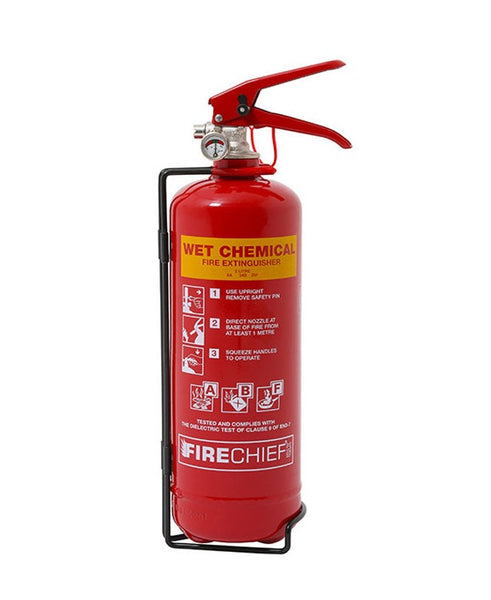The earliest fire extinguisher involved exploding gunpowder, which would have been useless on burning cooking fat. Fire and Safety Centre explains how the modern answer to kitchen fire suppression is the wet chemical fire extinguisher, and that it shares its science with soap making.

It’s possible to blow out a flame if it’s small enough – think candles on a birthday cake which we’re all familiar with.
What’s less well-known is that the notion of blowing out much larger fires was the basis for the earliest fire extinguishers, created in the 18th century by chemist Ambrose Godfrey pictured. He based his model on a barrel containing fire-extinguishing liquid within which was a pewter chamber of gunpowder. To put out a fire the gunpowder was ignited, and the resultant explosion scattered the barrel’s contents over the fire.
The perils and pitfalls of barely-controlled explosions when there’s already a fire are easy to see, particularly when burning liquids are involved. Explosions are very likely to make matters considerably worse, apart from the collateral damage, by spreading the burning liquid, and therefore the fire, over a much larger area.
Evolving chemistry
But thanks to ingenious chemists like Godfrey, fire extinguishers have evolved so that there’s a much more effective way to control fires involving burning cooking oil and fat in kitchens.
They’re called Class F fires, and the effective weapon against them is the wet chemical fire extinguisher, characterised by its yellow panel bearing the words ‘wet chemical’ in red.
It’s the newest of the fire extinguishers available, having been developed only in 2000. Look out for the British Standard BS 7937: 2000 for the fire extinguishers themselves, and BS 5306: 2000 for their selection and installation.
Science shared with soap making
Perhaps bizarrely, the chemistry involved in putting out a fire with a wet chemical fire extinguisher is the same as that used in soap making. It’s called saponification.
Saponification is the name of a chemical reaction involving a strong alkali (usually a potassium-based salt) with the oil, which it converts into a soft soapy mixture of hydrolysed acid and alcohol. This covers the surface of the burning oil, starving the fire of oxygen and putting it out. The added benefit is that the reaction draws heat from the oil, which cools it. Because the surface of the oil or fat is covered, and the temperature has been reduced, there is no danger of the fire re-igniting.
These fire extinguishers are invaluable for use in any commercial kitchen or food processing plant, but can be just as effective on smaller fires in domestic premises and the leisure industry.
Their manufacture recognises that all of these places are likely to have electrical equipment as well, and so are fitted with non-conductive lances to enable the chemical mixture to be applied to the fire safely without the risk of electrocuting the operator.
Important: suitable for commercial kitchen fire safety
- Selecting: The chemicals in a wet chemical fire extinguisher can have a corrosive effect, and are likely to have shortened lives if they’re made only of mild steel. Look for a polyethylene lining to protect the extinguisher body
- Using: Discharge all of the extinguisher’s contents as gently as you can onto the surface of the burning oil. The fire may go out very quickly, but could start again if you haven’t made a sufficiently-robust soapy chemical layer
These extinguishers are for use only for kitchen fire suppression when burning cooking oils and fats are involved. They can’t be used when the burning liquid is petrol or diesel fuel.
To protect your commercial property, we recommend visiting our range of wet chemical extinguishers.


